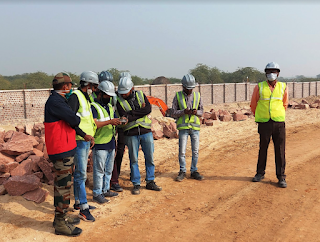Drone Survey & Aerial Inspection: Revolutionizing Industries from Above
In the fast-paced world of technology, the utilization of drones has brought about a remarkable transformation in various industries. Drone survey and aerial inspection have become invaluable tools that offer a bird's-eye view of our world. From agriculture and construction to environmental monitoring and beyond, drones have changed the way we gather data, make decisions, and conduct inspections. In this comprehensive article, we will delve into the fascinating world of drone survey and aerial inspection, exploring their applications, benefits, challenges, and the promising future they hold.
The Rise of Drone Technology
Drones, also known as Unmanned Aerial Vehicles (UAVs), have evolved from their military origins to become versatile assets in civilian sectors. These flying machines are equipped with cameras, sensors, and advanced navigation systems, making them indispensable for a wide range of applications.
1. Agriculture: Precision Farming
One of the most significant impacts of drone technology is felt in agriculture. Precision farming, enabled by drone survey, has revolutionized the way crops are grown. Drones equipped with multispectral cameras can capture high-resolution images of farmland, providing farmers with essential data on crop health, pest infestations, and irrigation needs. This information allows for targeted interventions, reducing resource wastage and increasing yields.
2. Construction: Site Monitoring
In the construction industry, monitoring the progress of large projects can be a daunting task. Drones offer a cost-effective solution by providing real-time aerial views of construction sites. Project managers can use this data to track progress, ensure adherence to plans, and enhance safety measures. The ability to spot potential issues from above saves both time and money.
3. Environmental Conservation: Wildlife Monitoring
Conserving our planet's biodiversity is a top priority. Drones play a vital role in this endeavor by allowing researchers to monitor wildlife without disturbing their habitats. From counting endangered species to tracking migration patterns, drones offer insights that are essential for conservation efforts.
4. Infrastructure Inspection: Keeping Cities Safe
Maintaining infrastructure like bridges, power lines, and pipelines is crucial for public safety. Aerial inspection using drones has made this task more efficient and cost-effective. Drones can access hard-to-reach areas, capture high-resolution images, and detect structural issues before they become critical.
Advantages of Drone Survey & Aerial Inspection
The adoption of drone survey and aerial inspection brings forth several compelling advantages:
1. Safety First
In industries like construction and infrastructure inspection, sending humans into hazardous environments can be risky. Drones eliminate this danger by taking on the task. They can explore unstable structures, assess damage after natural disasters, and minimize the risk to human lives.
2. Cost-Efficiency
Traditional methods of aerial data collection, such as manned aircraft, are expensive. Drones are more cost-efficient, requiring minimal manpower and fuel. This affordability makes high-frequency surveys and inspections feasible, leading to better decision-making.
3. Rapid Data Acquisition
Drones can cover vast areas in a short time, collecting extensive data in a matter of hours. This rapid data acquisition accelerates project timelines and enables quicker responses to emerging issues.
4. Enhanced Accuracy
With advanced GPS and camera technology, drones can provide highly accurate data. This precision is especially critical in agriculture, where minor variations in crop health data can translate to substantial yield improvements.
Challenges and Considerations
While drone survey and aerial inspection offer significant advantages, they are not without challenges:
1. Regulatory Hurdles
The use of drones is subject to strict regulations, especially in urban areas and near airports. Compliance with these regulations is essential to avoid legal complications.
2. Data Security
Collecting and transmitting data via drones can raise concerns about data security and privacy. Ensuring secure data storage and transmission is crucial.
3. Weather Limitations
Adverse weather conditions can limit the operational window for drones. Rain, strong winds, and low visibility can disrupt survey and inspection schedules.
The Future of Drone Technology
As technology continues to advance, the future of drone survey and aerial inspection looks promising. Here are some exciting developments on the horizon:
1. Automation and AI Integration
Drones are becoming smarter with the integration of artificial intelligence. They can autonomously analyze data, detect anomalies, and make real-time decisions, further enhancing their capabilities.
2. Increased Payload Capacity
Future drones are expected to carry more significant payloads, enabling the use of more advanced sensors and equipment. This will expand their applicability in various industries.
3. Beyond Visual Line of Sight (BVLOS) Operations
Regulatory changes are paving the way for BVLOS operations, allowing drones to travel longer distances. This opens up new possibilities for industries like logistics and delivery services.
Conclusion
In conclusion, drone survey and aerial inspection have emerged as game-changers across multiple industries. Their ability to provide safety, cost-efficiency, rapid data acquisition, and enhanced accuracy is reshaping how businesses operate and make decisions. While challenges like regulations and data security persist, ongoing advancements in technology promise a brighter future for drones. As industries continue to harness the power of drones from above, their potential to revolutionize even more sectors remains limitless. Embracing this technology is not just an option; it's a necessity for staying competitive and efficient in today's fast-paced world.
Visit More :-


Comments
Post a Comment